A look at Rhossydd today, trying to find the connection into Croesor.
visited with cunningcorgi and wonkycows
History
Slate was first discovered here in the 1830's when quarrying commenced on a very small scale. The first major workings were at a site known as the West Twll (twll = pit or hole), begun in the 1840's, about a mile south and nearly 300 feet higher than the final main workings at Bwlch Cwmorthin. This pit was enlarged and deepened over the years to a depth of over 200 feet. As the workings went deeper, adits and tunnels were driven north to win more slate and to drain the workings. A similar but smaller East Twll was also begun a few years later. Eventually the easier won slate became exhausted and the quarry developed into an underground working following the vein of slate northwards and downwards. The quarry developed to encompass 14 floors underground, numbered from the top, with a total of 170 chambers from which the slate was won. As the workings progressed northwards so did a succession of surface workings and access tunnels and it is this aspect of Rhosydd which is part of its uniqueness. In other quarries the development is less easily visible or is obscured by later workings. As an indication of what lies beneath one's feet, the final main workings at Bwlch Cwmorthin are on level 9 and all 5 levels below this are now flooded.
The quarry was operated by a string of different owners each developing and enlarging the workings. But the story is not one of steady expansion. The ups and downs of the slate trade, the difficulties of raising capital, geological problems and dangerous underground working practices also brought periods of closure and industrial unrest. Peak output occurred in the 1880's when over 6000 tons per year of saleable slate was mined. This was also the period of greatest employment when over 200 workers were engaged. A major blow to the quarry occurred in 1900 when the "Great Fall" occurred underground, in the south eastern section of the workings. This destroyed a large part of the most profitable reserves. From this major blow the quarry never fully recovered.
1 Ghost Village
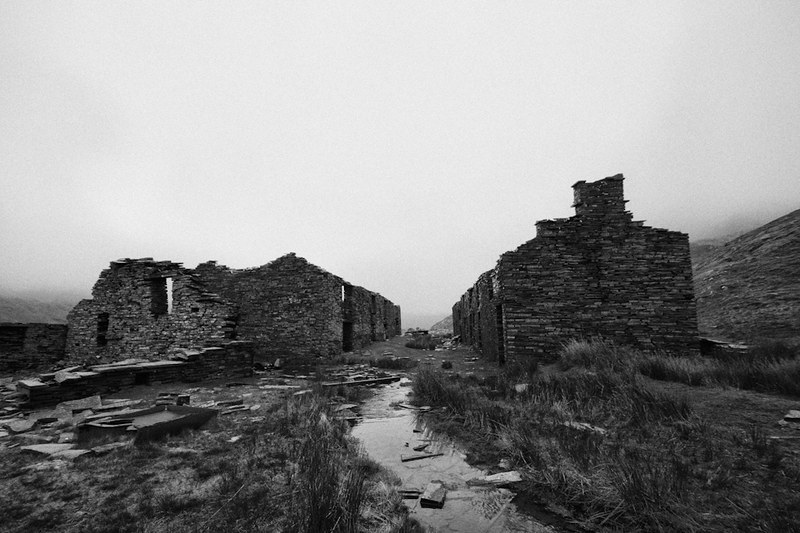
2 Main Adit over 2000 yards long!

3 Looking back
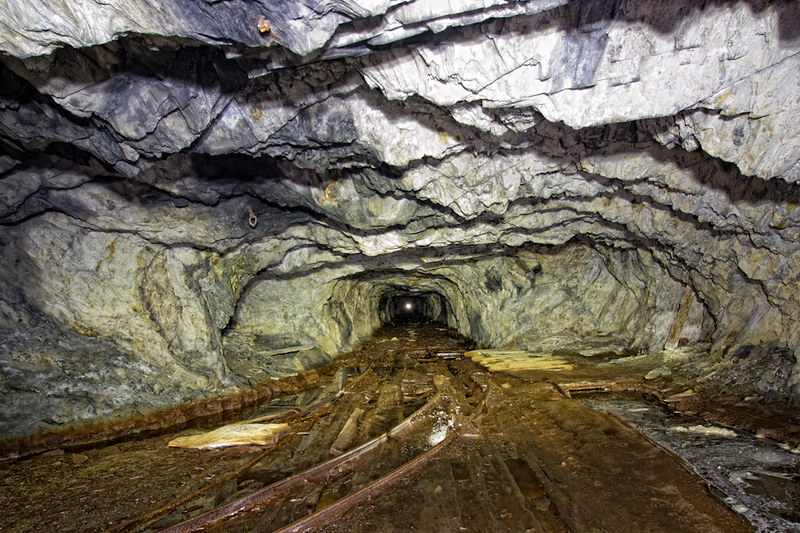
4 Rope haulage wheel
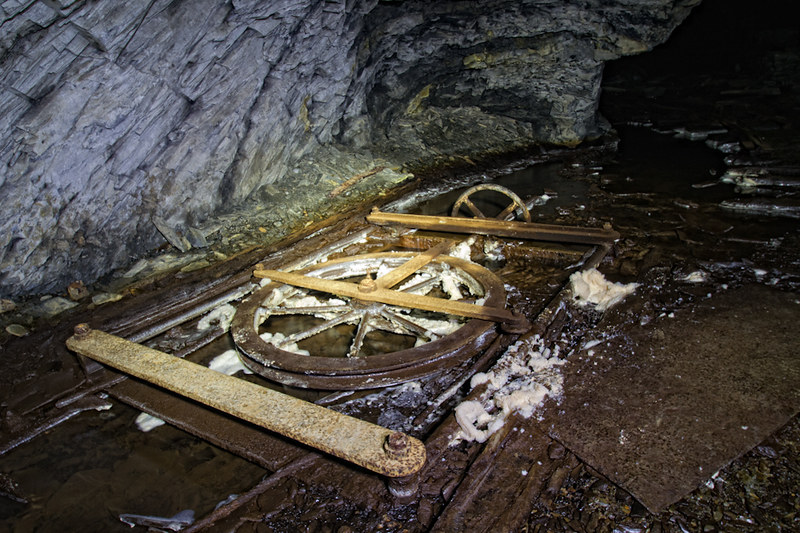
5 Incline chamber
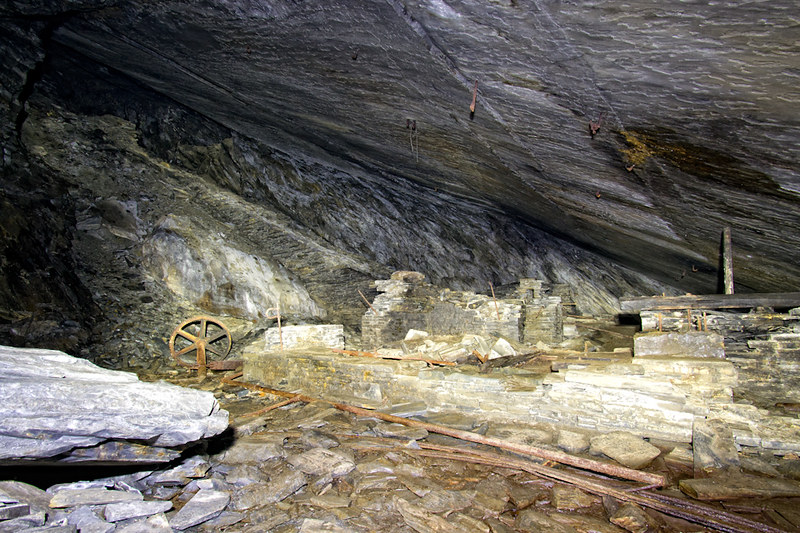
6 Looking up incline
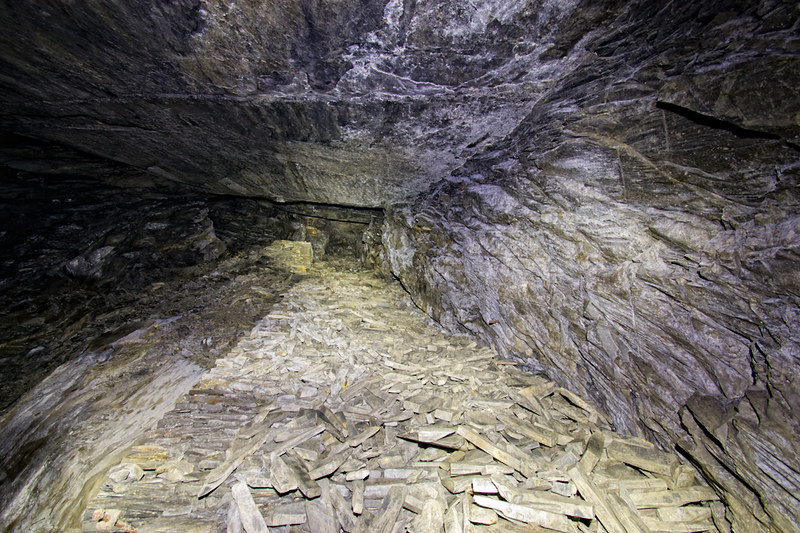
7 Angled passage
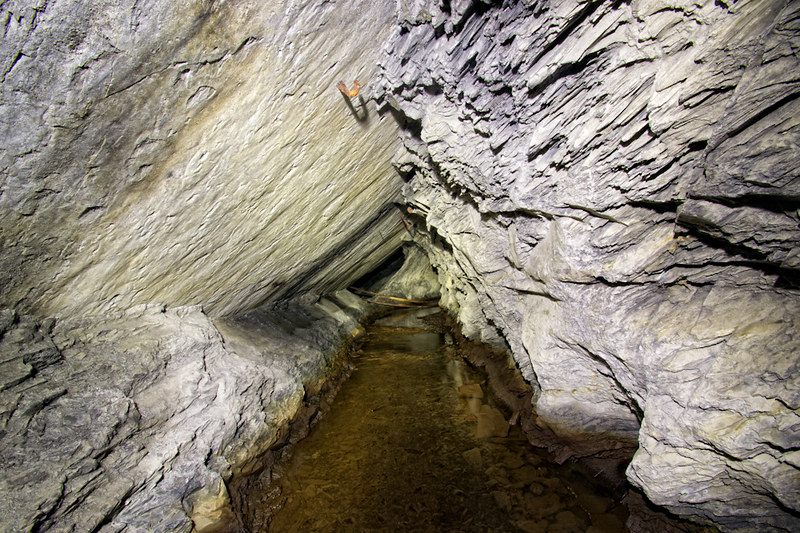
8 Admiring a collapse
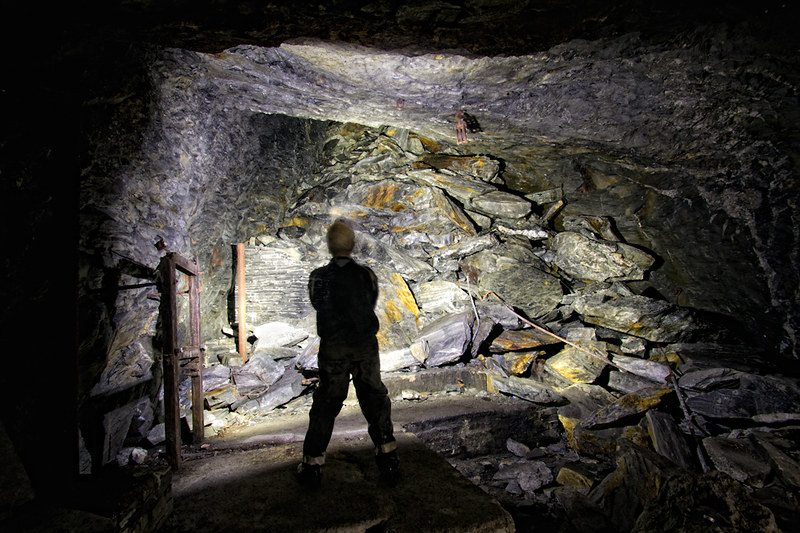
A rather nice mine, although we didnt find the connection we had some fun in the quarry outside, which involved me trying to climb out only for the cliff to come away in my hands!
visited with cunningcorgi and wonkycows
History
Slate was first discovered here in the 1830's when quarrying commenced on a very small scale. The first major workings were at a site known as the West Twll (twll = pit or hole), begun in the 1840's, about a mile south and nearly 300 feet higher than the final main workings at Bwlch Cwmorthin. This pit was enlarged and deepened over the years to a depth of over 200 feet. As the workings went deeper, adits and tunnels were driven north to win more slate and to drain the workings. A similar but smaller East Twll was also begun a few years later. Eventually the easier won slate became exhausted and the quarry developed into an underground working following the vein of slate northwards and downwards. The quarry developed to encompass 14 floors underground, numbered from the top, with a total of 170 chambers from which the slate was won. As the workings progressed northwards so did a succession of surface workings and access tunnels and it is this aspect of Rhosydd which is part of its uniqueness. In other quarries the development is less easily visible or is obscured by later workings. As an indication of what lies beneath one's feet, the final main workings at Bwlch Cwmorthin are on level 9 and all 5 levels below this are now flooded.
The quarry was operated by a string of different owners each developing and enlarging the workings. But the story is not one of steady expansion. The ups and downs of the slate trade, the difficulties of raising capital, geological problems and dangerous underground working practices also brought periods of closure and industrial unrest. Peak output occurred in the 1880's when over 6000 tons per year of saleable slate was mined. This was also the period of greatest employment when over 200 workers were engaged. A major blow to the quarry occurred in 1900 when the "Great Fall" occurred underground, in the south eastern section of the workings. This destroyed a large part of the most profitable reserves. From this major blow the quarry never fully recovered.
1 Ghost Village

2 Main Adit over 2000 yards long!

3 Looking back

4 Rope haulage wheel

5 Incline chamber

6 Looking up incline

7 Angled passage

8 Admiring a collapse

A rather nice mine, although we didnt find the connection we had some fun in the quarry outside, which involved me trying to climb out only for the cliff to come away in my hands!
Last edited:

































